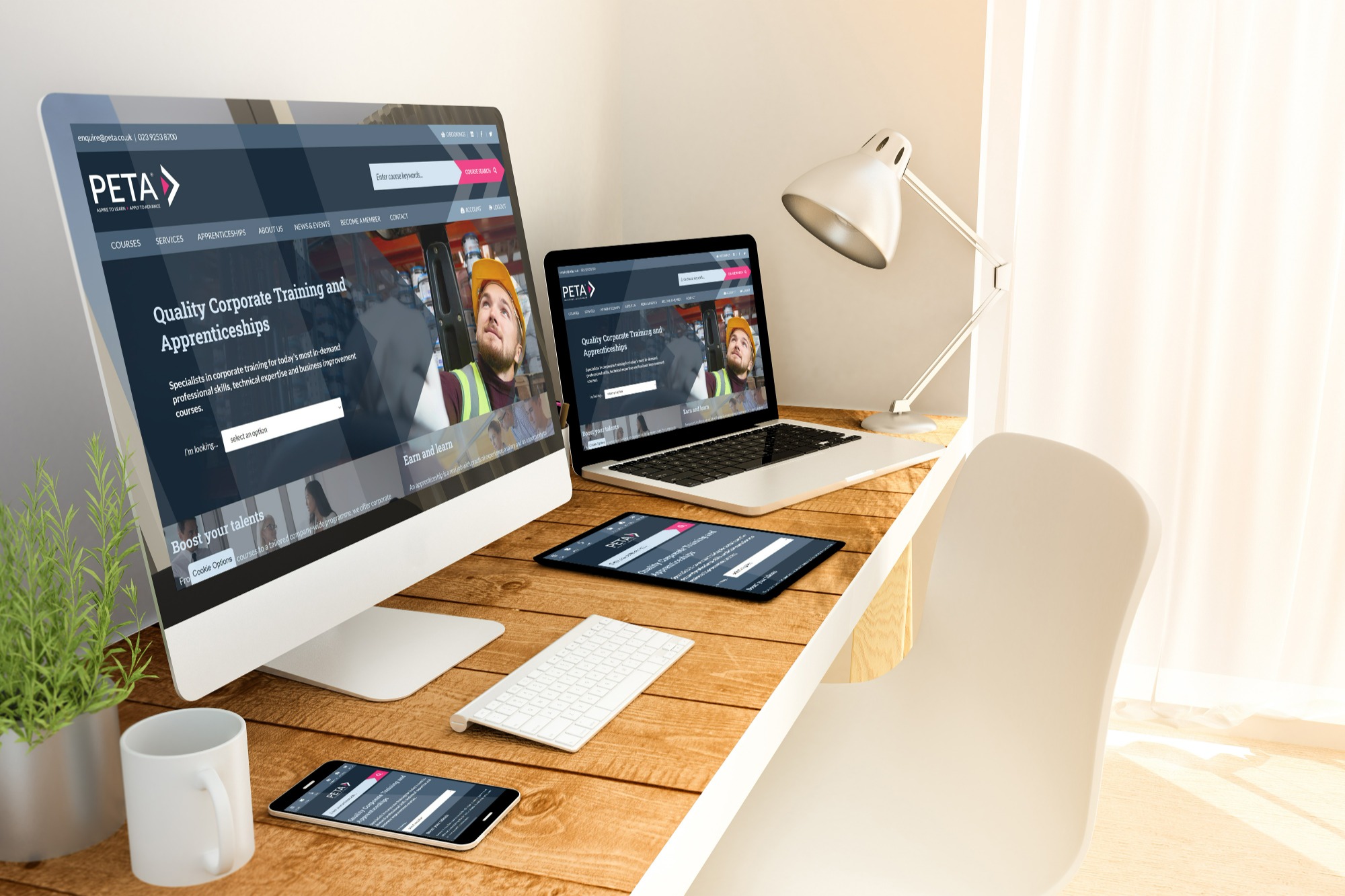The Importance of Considered and Consistent Branding

DATE: 19th October 2021
CATEGORY: creative
TAGS: brand design, brand strategy, marketing strategy
AUTHOR: Peter Garrett
Aligning customer perception with your vision
Brand design (or visual identity design) involves the recording and creation of the communication cues you use which people associate with your organisation, products and services. Your aim should always be to try and align the way you communicate with your audience with the way you wish to be perceived.
How can a visual identity help you achieve your marketing goals?
-
It delivers your message concisely.
-
Confirms your credibility.
-
Emotionally connects your target audience with your organisation.
-
Motivates your audience to react, engage and purchase.
-
Creates loyalty from your customers.
With a clear understanding of your goals, Serenity Digital can help you build the strong brand you need, in order to launch a successful marketing strategy.

More than just a logo...
Your brand is the perception which your customers, clients, prospects, team and suppliers have of you. It can be affected by the way you communicate with them in print media, online, face to face, over the phone, on social networks and more.
48% of consumers want companies to send them products that they would be interested in buying.
We’ve been living in a digital led, ultra-competitive market for some time now, so the need to stand out, be remembered and give people a great brand experience is paramount. Even so, we’re still seeing some confusion in the market over what branding really is, with many interpreting branding simply as logo design.

What we're seeing
A carefully considered brand identity will ensure that your organisation is reflected consistently and correctly across a range of mediums. You should aim to stand out from your competitors, openly communicating your mission, products, services and unique selling proposition, but most importantly your visual identity should appeal directly to your audience. So many are confused though, and we regularly see organisations following these common branding mistakes:
NOT UNDERSTANDING THE POWER OF A BRAND
Having a strong brand is advantageous through the immediacy of brand association. For example, when we think of buying online, many immediately think of Amazon. When we think of searching online, many immediately think of Google. For your organisation, you should seek to create this association for your consumers too, even if only in your region.
NOT DOCUMENTING CLEAR BRAND GUIDELINES
It’s important to create a brand identity when developing a brand, and a large part of this is putting together some defined brand guidelines that cover all the elements. This should include:
-
Mission, values and Unique Selling Proposition (USP)
-
Tone of voice and personality
-
Competitor and audience demographics
-
Logo mark and usage
-
Colour, Shape and Typography
-
Photography and Illustration
-
Graphic usage and rules
-
Constraints for mixed mediums
-
Examples of implementation
Having a set of guidelines also gives internal stakeholders the tools they need to keep the brand consistent.
BRANDING WHICH IS RIGID AND OVERCOMPLICATED
Less can be more. Before developing your brand, consider how fixed it needs to be. There should be some “must follow” rules, but also some flexibility too. Brand guidelines should not stifle creativity but enhance it instead.
NO POLICING OVER USAGE
When there are no brand guidelines and no rules in place on how to use a company’s branding, you will confuse your audience. Ensure you’re being proactive about where and how others are using your brand elements.
RELAXING ONCE BRANDING IS COMPLETE
The new visual identity has been completed and it looks great, however this is far from being the end of the journey. Think about why you have undertaken this exercise and consider how best to extend your reach with the right marketing strategy.
Doing it our way
Having your brand identity carefully designed and clearly documented is an important step in ensuring your organisation will be taken seriously in your marketplace. Our 9 tips below will get you started and get you thinking seriously about the importance of quality brand design:
KNOW WHO THE CUSTOMER ACTUALLY ARE
Understanding your audience by a range of factors will ensure you can adapt your message according to what influences them. Do you know their socio-economic characteristics (their age, gender, class, location, religion, opinions etc...) and reasons for their interest in you? Speak to them on an emotional level by understanding what makes them tick.
UNDERSTAND WHAT MAKES YOU UNIQUE AND HOW YOU PROVIDE VALUE
Have you considered what your competitors do and how you do it better? Keep your USP at the forefront of your mind during brand design exercises. Your audience will not immediately know what makes you better; Remind them!
ARE YOU EASILY UNDERSTOOD?
You know what you do, and you can explain it in terms which you understand; But does your audience understand it? Keep your communications free of jargon, speak in plain English and avoid showing off. No one likes a know-it-all.
BE FLEXIBLE TO THE MEDIUM
Don’t be afraid to change your tone of voice or look for different mediums. Your audience will change very much between your website, at an event, on Facebook or on LinkedIn. Be bold enough to adapt to the medium.
INVEST IN A QUALIFIED DESIGN PARTNER
If you pay peanuts you’ll probably receive peanuts. Purchasing something attractive is easy, but purchasing something which is true to your vision, attracts your audience, provides longevity and flexibility for multiple mediums is much harder. Your aim is to be memorable to your audience, not attractive to your CEO.
DON’T BE AFRAID TO BE SIMPLE
Creating something clean and simple is not easy. If you take this approach, remember to be true to who you are so you don’t risk losing what makes you unique.
BUILD A TEMPLATE LIBRARY
Having a clearly documented list of examples will ensure that you can easily produce consistent communications in future. If you experiment away from the core brand, document what works and place examples with your other templates.
MEASURE WHAT WORKS AND WHAT DOESN’T
The age old phrase (coined by John Wanamaker in 1922), “Half the money I spend on advertising is wasted; the trouble is I don’t know which half” doesn’t necessarily apply anymore. If you choose to take a more experimental approach, making adjustments to design on different platforms. Measure what works and learn from your statistics. Measure, monitor, learn, improve and measure again.
BE PATIENT
Don’t expect immediate returns. It takes an average of 5 to 7 points of contact with your audience before they might buy from you. Be consistent with your message, be frequent with your contact and be authentic. When created and designed correctly, your brand will reward you.
Don’t just sit there...
Whilst branding can mean different things to different people, businesses need to understand its importance, and relationship to driving more revenue and engagement. Rather than getting bogged down, just remember not to fall into the common pitfalls and keep your brand identity consistent.
To learn more about how branding, marketing strategy and how considered communications can help you achieve your goals, please get in touch.
First written in February 2018, updated in October 2021.
« All blogs